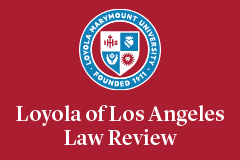Abstract
In several recent Supreme Court decisions, the Court has expanded the protections available to juvenile offenders in the criminal justice system, based on adolescent brain development research demonstrating that children merit different considerations than adults. This Article chronicles the Court’s recent juvenile justice decisions from Roper v. Simmons to Miller v. Alabama, tracing the Court’s increasing reliance on the “children are different” rationale. But despite this resurgence in expanded protection for adolescents, youths of color have historically been excluded from the “children are different” philosophy. Dating back to the early nineteenth century, youths of color were subjected to disproportionate treatment in the criminal justice system as exemplified by convict leasing, lynching, and the Jim Crow era. The vestiges of the Jim Crow era eventually gave rise to the modern-day superpredator myth—a stereotype depicting youths of color as violent creatures devoid of remorse. The historical discrimination against youths of color, coupled with the rise of the superpredator myth, has inculcated an implicit bias against youths of color in the criminal justice system. This implicit bias functions as a pernicious force, hindering the inclusion of youths of color in the “children are different” paradigm and impeding their ability to benefit from the protections mandated by the Court. This Article proposes several suggestions for mitigating the effects of implicit racial bias in juvenile life without parole proceedings, thereby extending the benefits of the “children are different” philosophy to youths of color.
Recommended Citation
Robin W. Sterling,
"Children Are Different": Implicit Bias, Rehabilitation, and the "New" Juvenile Jurisprudence,
46 Loy. L.A. L. Rev. 1019
(2013).
Available at: https://digitalcommons.lmu.edu/llr/vol46/iss3/6


